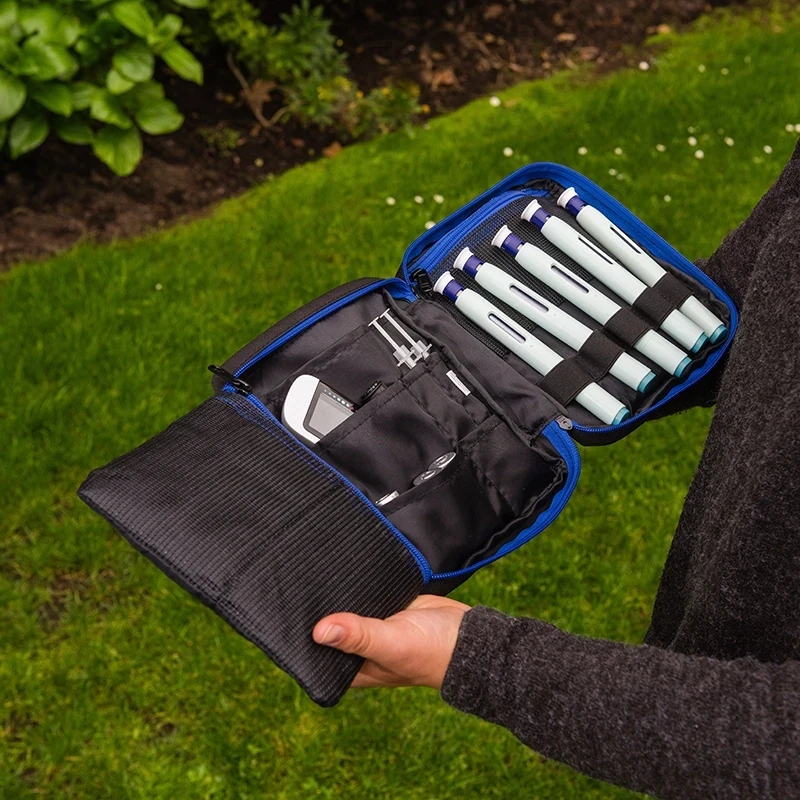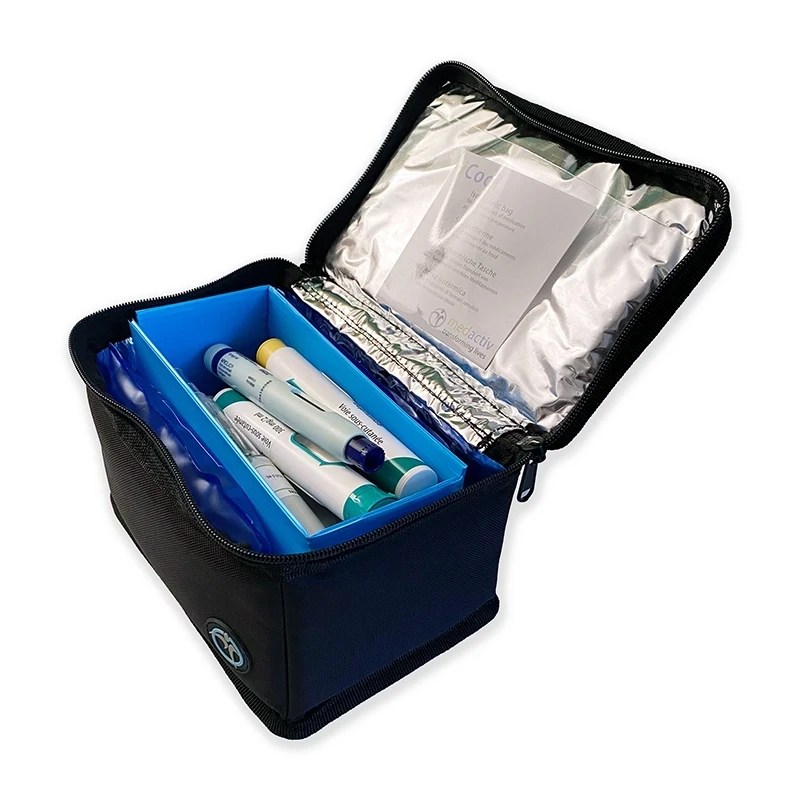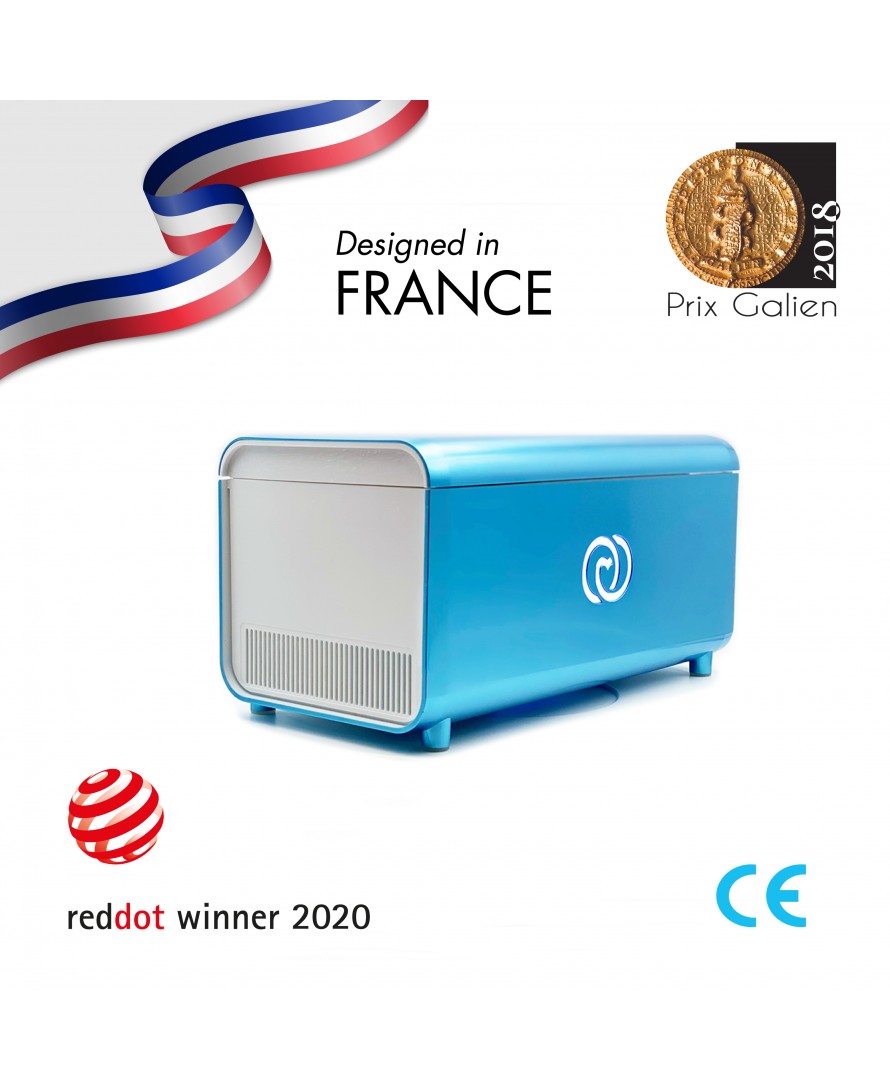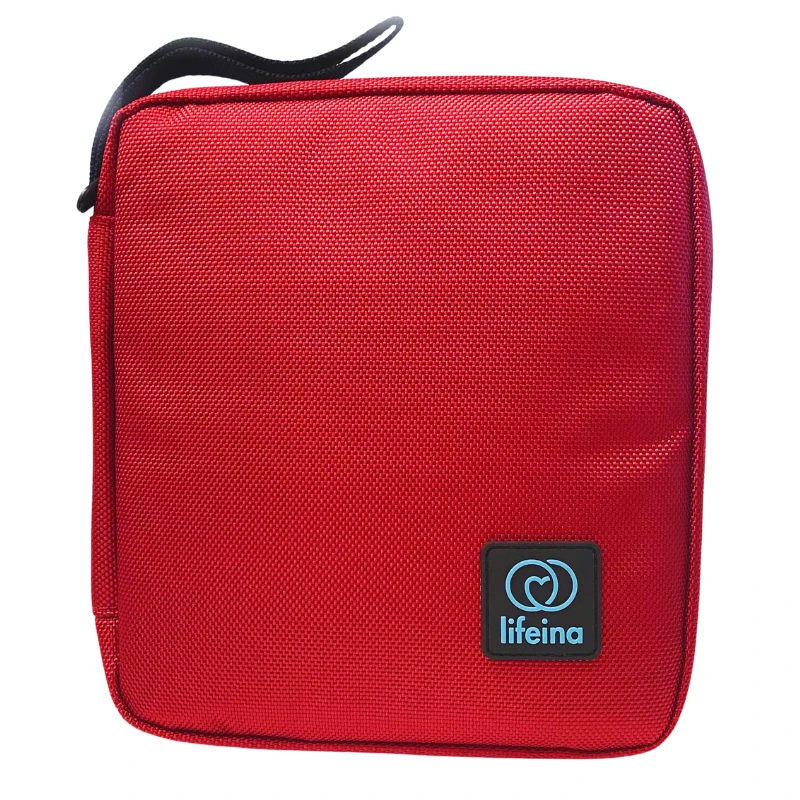Table of Contents
Today, diabetes should no longer prevent you from taking a trip to an exotic country or going on a mountain hike.
If you have diabetes and want to travel, you simply need to carefully plan your trip. Of course, there are always unforeseen events (lost luggage, shipwreck on a deserted island), but if you are well prepared, you can generally overcome all these difficulties without problems.
There are many misconceptions about diabetes and insulin, and quite often things that seem completely obvious to your doctor are a complete mystery to you.
Your travel agent and diabetes
Tell your travel agent that you are diabetic and explain to them the special requirements that traveling with diabetes entails. This way, a suitable itinerary can be planned to better meet your needs. A missed connection at an airport can ruin even the best-planned vacation.
Discuss with your doctor
Consult your doctor before planning/confirming your vacation with diabetes. Discuss your itinerary with them and develop plans for your meals and medications, especially if you are traveling across different time zones. Ask your doctor what to do if you fall ill during your vacation.
Discuss with your pharmacy
Request a list of your medications (including generic names and their dosages) from your pharmacist – especially oral diabetes medications and insulin. If you take insulin, know the types of insulin well and whether your insulin is rapid-acting, intermediate-acting, or long-acting. Carry a copy of this list with you at all times.
Travel insurance and diabetes
Make sure you have comprehensive travel insurance to cover your trip, and keep copies of your insurance documents with you in case of emergency. Some insurance plans do not cover pre-existing conditions, which may include diabetes. Check that your diabetes is covered by your medical insurance plan.
Diabetes in a foreign language
Learn to say “I am diabetic” and “orange juice or sugar, please” in the language or languages of the countries you are visiting. Learn important words related to diabetes in the language(s) of the country you are visiting (insulin, sugar, hypoglycemia, etc.) in case of a medical emergency or if you need to let people know about your condition.
Glucagon
If you use insulin to manage your diabetes, you should also ask your doctor if glucagon is suitable for you. Glucagon is administered by injection and is used to treat severe hypoglycemia, a condition that can cause seizures or loss of consciousness. If you are traveling to a remote location that does not have ambulance service, it is important that your travel companion learns how to administer glucagon to you. Talk to your doctor if you are not familiar with its use.
Your medications
Make sure you have enough medication to cover the entire period of your trip. It might also be a good idea to take double the amount of medication you will need for your trip and put one set in your carry-on luggage and the other in your companion’s carry-on. This way, you will have a backup if you happen to lose some of your medication during your trip.
Always have your medications in a properly labeled container as dispensed by your pharmacist, and keep your insulin at the right temperature (between 2 to 8°C). To transport your insulin and glucagon, use a MedActiv iCool Prestige case.

Needle containers
In addition to your diabetes medications, you will need a secure container to dispose of your used needles. Generally, these containers are available for free at your pharmacy. Discuss this with your pharmacy or doctor.
Vaccines
Be sure to get the necessary vaccinations at least four weeks before your departure to have time to deal with any potential side effects.
Prescriptions and Diabetic Card
Ask your doctor to give you a prescription in English, as English is the most widely accepted language internationally. Download a diabetic card and always keep this card in your wallet when traveling. It may save you a lot of trouble. This card is usually also available from your local diabetes association.
Travel certificate and diabetes
Download a travel certificate and have it filled out by your treating physician. This certificate explains that you suffer from diabetes and that you must not be separated from your medication, and that this medication must be kept at a temperature between 2 to 8°C. You can download this certificate for free:
European Health Insurance Card (EHIC)
If you are traveling in Europe, this card will entitle you to free or low-cost healthcare in most countries. The EHIC card is free and is available on the Health Insurance website.
Seasickness
If you suffer from seasickness, bring liquid carbohydrates (juice or carbonated drinks) with you.
Assistance
Always inform your airline or travel agency when booking that you have diabetes and may need assistance during the trip.
Copies of your prescriptions
Make copies of your prescriptions and keep them in your carry-on luggage in case customs or airport security question you about the medications you are carrying.
Your medications
Divide your diabetes supplies/medications in two and put half in your carry-on luggage and the other half in your travel companion’s luggage (if possible). This way, even if you lose one of your bags, you will have emergency supplies.
Take extra supplies and medications in case of loss or theft. Above all, make sure you have some of your medications in your carry-on luggage. Generally, do not put your medications in checked baggage where the temperature is not always stable.
Keep your insulin at the right temperature (between 2 to 8°C). To transport your insulin and glucagon, use a MedActiv iCool case from several models.
Also plan for other supplies you might need, including treatment for hypoglycemia, food, drinking water, walking shoes, cotton socks, sunscreen, and medications for nausea and diarrhea.
Customs
- Inform security agents that you have diabetes and are carrying medical supplies. Your medications must have a prescription label with your name
- All your medications must have the manufacturer’s label
- Syringes are allowed by security if you are also carrying insulin
If you take insulin, remember to carry it with you at all times. The security scanners used during check-in will not damage your insulin or blood glucose meter. However, if your luggage stays in the X-ray path for longer than normal, or if the luggage is X-rayed multiple times, the insulin may lose its potency.
Customs and insulin pumps
Notify the screening agent in advance if you use an insulin pump. The metal detection portal and handheld metal detectors can affect the functioning of an insulin pump, so you can ask the screening agent to perform a physical search in a private location. You should inform them that the pump cannot be removed.
Where to put your insulin on the plane?
Generally, the areas where luggage is stored are all pressurized and maintained at a constant temperature of about 5°C in the plane. This is a standard for the vast majority of airlines. So it’s not a problem to put insulin in the hold. However, if you are taking an unusual trip (for example, in the Russian steppes with an ex-Russian military plane), be aware that the luggage will probably be in an unpressurized area and therefore at a temperature that is too low, which risks freezing your insulin.
Insulin is affected by extreme temperatures and should never be stored in an unpressurized area of the plane. It is important to inspect your insulin before each injection.
If you notice anything unusual about the appearance of your insulin, replace it immediately with new insulin.
Generally, it is recommended to never separate from your insulin and, if possible, to carry it in your hand luggage, because if your insulin is in your main checked baggage and your suitcase is lost, it could ruin your vacation. Always keep with you, wherever you go, at least enough insulin for the duration of the trip and one extra day. MedActiv manufactures a whole series of different cases for the safe transport of insulin on planes.

Transporting your insulin with various modes of transportation
By plane
Plan to arrive at the airport early before your flight because if you arrive with insulin and syringes at customs, the verification by airport security agents may take a few extra minutes. Airlines usually offer special meals for people with diabetes (however, you need to notify them of your needs at least 48 hours in advance), but with a little planning, regular meals can also normally fit into your usual diet.
Always have appropriate snacks with you in case your flight or in-flight meal is delayed, or if the provided meal doesn’t have enough carbohydrates. Be aware of time zone changes and your meal schedule, and prepare your medications accordingly.
If you sleep during your plane trip, use an alarm or ask the flight attendant to wake you up at mealtime or when it’s time to take your medications.
Try to stay active during your trip: walk around in the terminal before boarding, do simple stretching exercises in your seat, or rotate your ankles. Occasionally, elevate your legs.
If you use a prescription medication, it is important to have it with you and to know how to use it, as well as any side effects you might have. This will allow you to explain to the flight attendant how to help you if you need it.
By car
Whether you are a driver or a passenger, it is very important to check your blood sugar regularly. Check it before leaving home, then again every four hours during your trip.
Stop every two hours to stretch your legs and do some physical activities to improve circulation in your legs. At the first sign of hypoglycemia, take a dose of fast-acting sugars, such as glucose tablets, 175 ml of fruit juice, or even a soft drink.
Then take a longer-acting carbohydrate and a protein like a sandwich. Do not resume driving until the symptoms have disappeared and as long as blood glucose values are above 6 mmol/L.
If you take insulin, avoid driving between your injection and your next meal. Limit your driving to a maximum of 12 hours per day, or six hours between two meals. Take your medications, meals, and snacks as regularly as possible.
In case of traffic jams, car breakdowns, or wrong directions, it will not always be possible to find a restaurant; so bring with you something to treat hypoglycemia (glucose tablets, fruit juice, or soft drinks).
By boat
Cruise ships are known for their extravagant buffets. With such a wide range of appetizers and dishes available, it’s easy to overindulge. If possible, get a copy of the cruise menus and you will have an idea of the types of foods served and can plan your meals accordingly.
Stay active to compensate for any extra food you eat. Cruise ships offer a wide range of activities. Try an aerobics class, swimming, or take a walk on the deck at sunset.
It’s always a good idea to inform the cruise staff about your diabetes in case a problem arises.
Hiking
Outdoor vacations are often the most fun, but don’t forget the primary rule: avoid camping or hiking alone.
Tell someone where you are going and when you plan to return. This way, you can be found in case of an emergency. Take a first aid kit and if you use insulin: glucagon (glucagon is administered when a person has severe hypoglycemia).
Teach your travel companion when and how to use glucagon. For more information about glucagon, talk to your doctor.
The key to enjoying camping is to avoid things that greatly modify glucose levels, such as significantly more intense physical activity than usual. Be careful of cuts, bruises, sunburns, blisters, and insect bites. Make sure your food and water are not contaminated.
Make sure that food and water are not contaminated. Eat and drink enough to meet your needs – bring extra food, water, medications, and sugar. If you are going to be very active, you may need to decrease your diabetes medications, but discuss this with your doctor before doing so.
Blood glucose control during travel
Checking your blood glucose during your trip is as important (if not more so) as when you are at home. Bring with you the instruction manual for your glucose meter as well as extra batteries and test strips.
To facilitate tracking of injections and meals during time zone changes, keep your watch set to the departure time zone until the morning after your arrival.
Check your blood glucose as soon as possible after landing. With jet lag, it can be difficult to tell if you have a very low or very high glucose level.
After a long flight, try to relax for a few days to get your system back in shape. Check your blood glucose regularly. If you take insulin, plan your activities so that you can integrate your insulin and meals into your operating rhythm.
Insulin during travel
Insulins sometimes have different names and dosages in certain countries. If you need to buy insulin during your trip, make sure that the insulin concentrations and dosages are the same as those you normally use.
Try to use your own medications and syringes in developing countries. Avoid using local syringes if they are not sterile.
In principle, you should use the exact brand and formulation of insulin prescribed by your doctor. However, if you run out of insulin while on the road and your usual brand is unavailable, you can replace your insulin with an equivalent formulation from another brand (for example, NovoLog for Humalog, Humulin R for Novolin R). On the other hand, any change in formulation (for example, from rapid-acting to long-acting insulin) requires medical supervision.
Time zone changes
Long journeys often cross multiple time zones, so a 24-hour day can be extended or shortened, depending on the direction of travel. In any case, you will need to adjust your insulin schedule accordingly.
Blood glucose control can be disrupted by time changes, modified activity, or disturbances in the body’s rhythm and sleep patterns.
- When traveling east, your travel days will be shorter. If you lose more than two hours, you will need to take less intermediate or long-acting insulin.
- When traveling west, your travel days will be longer. If you gain more than two hours, you will need to take additional units of rapid-acting insulin and more food.
- You can change your meal and injection times by up to two hours in a day without adjusting your insulin dose or meal plan.
- Stick to your usual meal times as much as possible.
- If you cross more than two time zones, you will need to prepare a meal and insulin schedule with your doctor.
Oral medication users
If the time difference is less than three hours, you can shift the time of your medications by one to one and a half hours. If the time difference is more than three hours, ask your doctor for advice.
Food while traveling
Always have some snacks with you in case of hypoglycemia or if you can’t eat your next meal at the scheduled time. Cheeses, crackers, fresh or dried fruits, energy bars, and sandwiches are all healthy choices that are easy to carry in a handbag. Also, take some fast-acting sugar with you, such as glucose tablets or juice.
Avoid tap water in developing countries. This includes ice cubes made from tap water.
Alcohol, diabetes, and travel
Alcohol consumption can increase your risk of hypoglycemia. On the other hand, travel often corresponds to vacations where alcohol consumption is higher than usual.
To reduce this risk, take the following measures:
Before consuming alcohol
- Eat regular meals, take your medications, and check your blood glucose frequently (keep your glucose meter with you)
- Always keep a treatment for hypoglycemia with you (glucose tablets or fruit juice)
- Wherever you are, make sure someone knows your signs and symptoms of hypoglycemia and how to treat it so they can help you
- Be aware that glucagon, a treatment for blood glucose, does not work when alcohol is in the body. For this reason, make sure someone knows how to call emergency numbers if you lose consciousness
- Wear diabetic identification such as a Diabetic Card
While consuming alcohol
- Eat carbohydrate-rich foods
- Eat even more carbohydrate-rich foods if you are dancing, playing sports, or doing other unusual physical activities
- Always mix your own drinks. Use less alcohol and dilute your drinks with sugar-free mixers
- Drink slowly. Between each alcoholic drink, have a non-alcoholic beverage
After drinking
- Tell a responsible person that you have been drinking. They should monitor you for symptoms of hypoglycemia
- Check your blood glucose before going to bed
- Have a carbohydrate-rich snack if your blood glucose is lower than usual
- Set an alarm or ask a responsible person to wake you up during the night and early morning – hypoglycemia can occur at any time up to 24 hours after consuming alcohol
- Get up on time the next day for any food, medication, or insulin you normally take. Missed medications or insulin can lead to hyperglycemia, ketones, and diabetic ketoacidosis
Diabetes and feet while traveling
Diabetics need to take care of their feet.
- Take at least two pairs of shoes so you can change shoes often. Changing shoes helps prevent blisters and painful pressure points
- Take comfortable shoes and socks and a first aid kit to treat minor foot injuries
- Don’t walk barefoot. If you’re at the seaside, wear shoes specially made for the ocean or beach walking. Protect your feet at all times when you’re at the pool, in a park, on the beach, or swimming in the ocean
- Don’t wear open-toed shoes, including sandals, flip-flops, or others (you increase your risk of injury and infection when your toes are exposed)
- Follow your daily foot care routine
If you get sick
When you are sick, your blood glucose can fluctuate and be unpredictable. During periods of illness, it is VERY IMPORTANT to:
- test your glucose level every two to four hours
- continue taking your diabetes medications
- drink plenty of sugar-free fluids or water
- avoid coffee, tea, and sodas that contain caffeine, as it can dehydrate you
- replace solid foods with liquids that contain glucose if you can’t eat your usual meal
- consume 15 grams of carbohydrates every hour
- call your doctor or go to an emergency room if you vomit and/or have diarrhea twice or more in four hours
- if you’re on insulin, continue to take it while you’re sick. Check with your doctor to adjust your insulin dose during illness
- rest
- if you have travel insurance, take your documents to the hospital with you
Insulin storage and transport
Insulin must be stored properly, as it will quickly expire if left at temperatures that are too hot or too cold. At an ambient temperature of 25°C, insulin will maintain its effectiveness for about three weeks. At a temperature of 28°C, insulin will lose about 14% of its effectiveness over a one-month period, and at 32°C it will lose about 18% of its effectiveness over the same period. If insulin is exposed to temperatures below 0°C or is frozen, it almost immediately develops crystals that make injection dangerous and uncomfortable. The ideal storage temperature for insulin is between 2 and 8°C. At this temperature, insulin can be maintained almost indefinitely.

Medication transport
Lifeina and MedActiv have developed a range of solutions to keep your insulin at the right temperature. These solutions come in two main technologies, which are insulated cases and mini-fridges.
EasyBag cases keep medications cool for 4 days without electricity. EasyBag cases use gel crystals that cool when they come into contact with water. To activate the EasyBag, simply immerse it in water for 40 seconds. The crystals in the EasyBag panels turn into gel that stays cool for five to seven days (depending on the ambient temperature) relying on an evaporation process that will keep your medication at a temperature between 16 and 25°C (up to an ambient temperature of 38°C). Generally, insulins can be stored for three weeks at this temperature.
LifeinaBag bags use a new generation of chemical ice packs that don’t sweat and have a longer melting point than traditional ice packs. This allows medications to be transported safely during travel, at work, or on vacation.
LifeinaBag bags allow medications to be transported for up to 24 hours between 2 to 8°C and also include separate compartments for transporting all your accessories.

Useful tips
- For environmental reasons, more and more hotels are using a coded card to open room doors in the hotel and then using this card as a switch to turn the electricity in the room on and off. This means that when you leave your hotel room and take your card, you turn off all the electricity in your room, including the small fridge where you might be keeping your medications cool. To work around this problem, use any old plastic card (business card, etc.) as a switch and leave it permanently in the room so that the electricity stays on.
- If you need to freeze your ice packs for your insulated case before leaving the hotel, the fridges in hotel rooms are generally not of very good quality and don’t freeze ice packs well. Instead, ask the hotel bar to freeze them for you. After all, they always need ice in bars and therefore have very good quality freezers.

